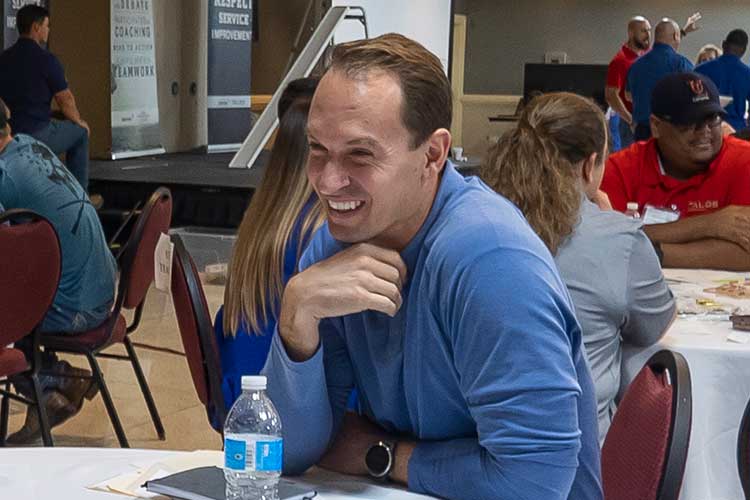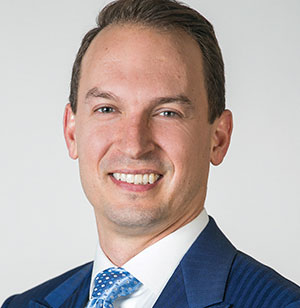The 2023 CEOs Who “Get It”

Paul Danos
CEO
Danos
Houma, LA

Danos is a 76-year-old, family-owned energy service company that employs more than 2,500 people who help build, maintain and operate customer assets. Danos is at the forefront of the energy industry as a company with a heart for service and a culture of safety. Since 1947, Danos has grown from a small South Louisiana oil and gas service company to a trusted, global energy partner with 13 service lines.
Describe your personal journey to becoming a CEO who “gets it.”

I am a third-generation family member in a family business that started in 1947. Part of the program for family members interested in working at the business is to work summers at various field locations during high school and college. From our fabrication shop in Larose, LA, to our shore base in Fourchon, LA, to a lift boat in Lake Maracaibo, Venezuela, I learned so much about our business during those work experiences. The most seminal component of that learning was the amazing Danos team members I got to know along the way. Our commitment to safety is rooted in our desire to set the standard for how we treat the people who work for this company. Spending summers getting to know the people on our front lines continues to drive my commitment to protect our people. Today, we continue to require that our leaders regularly engage with our team members who are working at field locations.
What is the biggest obstacle to safety at your organization, and how do you work to overcome it?
We work tirelessly to instill a commitment to safety in our people and provide the skills and knowledge to execute every task safely. However, most of our people leave their homes and go directly to a customer location without regular trips to our office locations. Because we do not control most aspects of our team members’ work environments and have limited face-to-face contact with employees, we must be creative about supporting, training and connecting with our people. There is no one silver bullet to overcome this challenge. Instead, we have a long list of activities, meetings, communications and engagements that enable us to support our people. It’s all rooted in safety being a value that enables a commitment to the resources required to continue all these activities.
Why is safety a core value at your organization?
We know that all people are created in the image of God. This means that every human being has intrinsic worth. We have a sacred obligation to protect our people.
How do you instill a sense of safety in employees on an ongoing basis?
I believe people are more likely to buy into a culture of safety if they understand where it comes from. We strive to ensure people feel cared for at Danos. We are committed to setting the standard for caring for employees. Once they see we are serious about this, they will be more likely to engage in all the safety meetings, read our safety alerts, share best practices with their teammates, provide recognition to people who are living our safety values and challenge someone who is falling short. We are also a listening and learning organization. Many of our policies and procedures are developed with the help of our field leaders. Giving them a seat at the table is essential to building our safe work culture. When our employees learn that our field leaders are engaged in our strategy for safety, they are all in.
How does your organization measure safety? What are the leading indicators that show you how safe your organization is, and where do you see room for improvement?
We track our total recordable incident rate and have for a long time (since 1979). That lagging indicator is near the lowest (best) we have ever seen and still has value for informing us of how we are performing. However, we feel like a combination of our near misses, behavior-based safety data, the potential severity of incidents (or near misses) and compliance with our Work Safe Oath (a promise to abide by our nine most critical safety commitments) is the best indicator of our overall safety health. Last year, we had a spike in our Work Safe Oath violations. We recognized the need to reinforce our collective commitment to that promise and had a blitz to get things moving in a different direction. We hold monthly Safety Management Team meetings attended by our executives, general managers, directors and division managers. In this meeting, we review our leading and lagging indicators and strategize our next steps for improvement. Each person on the leadership team is responsible for being an active and visible representative for safety. We are tasked with attending safety meetings, participating in job safety analyses, hand audits and our weekly companywide safety call. We track each person’s participation and measure our ownership of safety.
What role does off-the-job safety play in your organization’s overall safety program? What types of off-the-job safety and health programs does your organization offer to employees?
Off-the-job safety is critical to our success. Safety isn’t a value if we are only thinking about it at work. We don’t distinguish between on- and off-the-job safety when discussing culture and safety as a value. They must be integrated into how we teach, support and discuss safety. Our BBS program is open to anyone, so we encourage our spouses and children to be active. We open our mobile app to the public so that we can learn from all sources of information. Topics during the weekly safety call often deal directly with hazards away from the jobsite. Some examples include dehydration, health care topics, water safety, holiday hazards, hurricane preparedness, etc.
What have you done to support employee mental health and well-being within your organization?
Like many employers, we offer an employee assistance program that provides free support from licensed therapists. We encourage our team members to use this resource when needed. More importantly, we believe that our efforts to set the standard for caring for our employees enables and empowers our leaders and the folks who work alongside each other to help their fellow team members when they need it. One tangible example of what we are doing in this area is the “Danos Cares” arm of our foundation. We support employees who are going through difficult times. As more and more of our employees have become aware of this effort, I believe they are more attuned to the needs and challenges of their fellow Danos team members.
Post a comment to this article
Safety+Health welcomes comments that promote respectful dialogue. Please stay on topic. Comments that contain personal attacks, profanity or abusive language – or those aggressively promoting products or services – will be removed. We reserve the right to determine which comments violate our comment policy. (Anonymous comments are welcome; merely skip the “name” field in the comment box. An email address is required but will not be included with your comment.)


